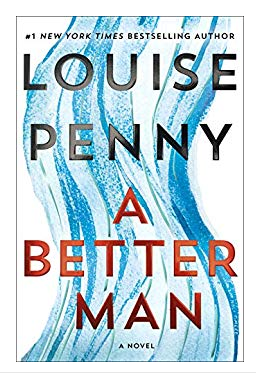Peter Lovesey is a prolific author with more than fifty published books that include mysteries and short stories as well as nonfiction. In addition, he has edited anthologies of short stories. Lovesey has written eighteen books featuring Detective Superintendent Peter Diamond.
The Last Detective, the first book in the Diamond series, almost becomes the last since DS Diamond resigns from the force—only to be reinstated, of course, but after a delving into and solving the murder that takes him off the force in the first place.
Set in Bath, The Last Detective opens with the finding of the nude body of a beautiful woman floating in Chew Valley Lake. Since the body has been in the water an indeterminate time, the medical examiner has a difficult time identifying the cause of death. Some speculation includes suicide, but the police can find no clothes along the shore anywhere. Finally, the ME decides that the woman has been murdered, likely by asphyxiation.
Chew Valley Lake where the body is found is pictured below:

Although DS Diamond is only in his forties, he sees himself as the last detective using legwork, questions of anyone who might be involved, and avoiding computers. At times, he must give in to the pressure to use computers to research crimes, but he assigns those duties to John Wigfull, his new assistant detective.
Like many other brilliant detectives in fiction, DS Diamond faces an uphill battle with the administration. He is of size and has been accused in a previous investigation of pressuring a man into confessing for a crime he did not commit. By the time readers meet Diamond, he has been exonerated, but not to the extent he hoped: complete exoneration, leaving no mark on his record. Diamond also believes Wigfull has been assigned to him as a spy for the brass, so he is distrustful of Wigfull.
He explains to Assistant Chief Constable Tott that in the Missendale affair, Hedley Missendale had confessed because he had been threatened by organized crime bosses to take the fall. Missendale knew he would be safer in prison than disobeying orders. Diamond is accused of racial prejudice, however, in pursuing Missendale, a known criminal. Of course, the official report makes no mention of the threats Missendale endured. The verdict was overturned and Missendale freed.
After some time, the woman is identified as Geraldine, Gerry, Snoo, a former actress who played Candace Milner on The Milners, a soap opera. Her husband is Gregory Jackman, professor of English at the University of Bath.
Complications to the story arise along with subplots. Jackman identifies Gerry’s body for the police. DS Diamond immediately interrogates Jackman, thinking he must have committed the murder, especially since he has not reported his wife missing in the four weeks since he has last seen her.
Jackman is having a coffee and watching three young teenage boys playing near the river. He sees one of the boys dodge a stick thrown by his friend, lose his footing, and fall into the river. Jackman runs to the river’s edge, removing his shoes and suit coat. He manages to grab the boy and drag him ashore, giving him “the kiss of life” to revive him. In the hubbub after the rescue, Jackman slips away unnoticed and no one knows who has saved Mat Didrikson. The mystery man becomes another subplot that takes on significance as the story progresses.
Molly Abershaw, a determined newspaper reporter, takes pictures and statements from Dana and Mat Didrikson, publishing a story in her newspaper. She asks for people to identify the man who rescued Mat or for the man himself to come forward. Then Mat sees a documentary on TV about the Jane Austen exhibit at the University of Bath. Jackman is the curator, so he is showing the reporter around the exhibit when Mat recognizes him. In an effort to thank Jackman, Mrs. Didrikson gives him two letters written by Jane Austen to her Aunt Jane Leigh Perrot. Mrs. Didrikson by researching Jane Austen discovers the letters belong to a man who wanted them only for the stamps. He does not know the value of the letters and Mrs. Didrikson offers him thirty pounds for them which he accepts.
Along with Gerry’s death, the Jane Austen letters go missing. Thus, the complications surrounding the case mount up. Diamond clears Jackman of the murder, but then he questions Mrs. Didrikson who has tried to evade him.
In a particularly nasty exchange between DS Diamond and his boss who accuses Diamond of assaulting Mat Didrikson in trying to apprehend Mrs. Didrikson, Diamond resigns. Diamond takes several menial jobs, including one as a bartender. Shortly before Mrs. Didrikson’s trial is to begin, Jackman tracks Diamond down and enlists his help in trying to prove Mrs. Didrikson’s innocence, another uphill battle.
So, readers, the real killer is…. No spoilers here. Read The Last Detective to discover if Mrs. Didrikson is the killer or someone else is responsible for Gerry’s death. And where are the missing Jane Austen letters?
Peter Lovesey maintains an extensive Web site: https://peterlovesey.com/. There readers can discover a list of all his works and information about Peter Livesey himself.
Below is a picture of the Jane Austen Centre located on Gay Street in Bath. Austen lived on the street, but in another home. She actually lived in several locations in Bath.

Lovesey sets the Diamond stories in Bath where he lived for a number of years. Lovesey has won a number of awards including the Cartier Diamond Dagger in 2000, the Grand Prix de Litterature Policiere, and the Ellery Queen Readers’ Award.
I enjoy reading books in a series because I can become better acquainted with the main character and learn about other characters in his/her life. The series allows the author to continue to develop characters, thus creating a sense of family.
.


























